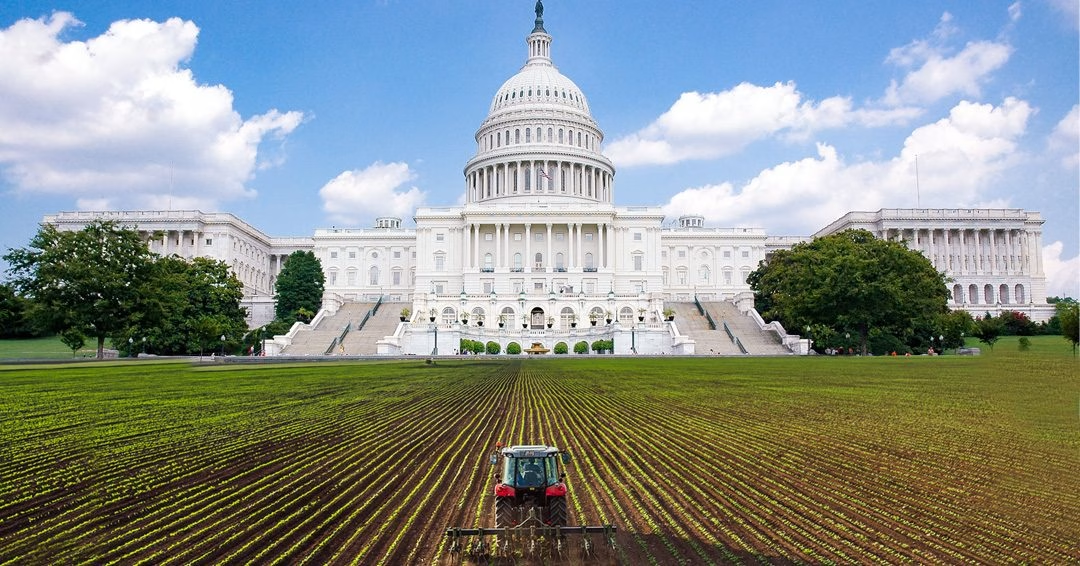With Brooke Rollins stepping in as Agriculture Secretary, dairy farmers are curious. Can she bring the boost the industry desperately needs?
Summary:
In a move set to stir Washington D.C. and the vast landscapes of rural America alike, President Trump has nominated Brooke Rollins as the Agriculture Secretary. As someone who hails from the heart of Texas, Rollins’ appointment is seen as a homecoming of sorts and may herald a new era for the dairy sector — one of reinvention and resilience. Rollins brings a robust strategy to the table, grounded in Republican principles aimed at shaking up current market dynamics for the betterment of the dairy industry. This could include implementing market-driven solutions to boost dairy prices and profits, enhancing trade opportunities for dairy exportation, and simplifying regulatory frameworks. However, under her conservative approach, government intervention through subsidies may be reduced, affecting farmers relying on these payments. Experts suggest that Rollins’ policies could streamline dairy farmers’ operations by cutting red tape and offering greater access to international markets. But as stakes rise, dairy farmers and industry professionals watch keenly to see if Rollins can navigate the complexities of modern agriculture and steer them towards prosperity.
Key Takeaways:
- Brooke Rollins, a native Texan, has been nominated by Trump as the Agriculture Secretary, bringing her rich experience to Washington D.C.
- Her appointment could bring significant changes to the dairy sector, with a focus on market dynamics and policy reinvention.
- Rollins faces the challenge of navigating dairy farmers through economic and environmental uncertainties.
- Her leadership style aligns with Republican goals, emphasizing innovation and resilience in the agricultural landscape.
- The dairy industry anticipates how Rollins will push boundaries to align agricultural policies with future sustainability.
- Rollins’ strategy for the dairy market includes a strong Republican edge, promoting growth and market competitiveness.

Brooke Rollins’ appointment as Agriculture Secretary could mark a significant turning point for America’s dairy farmers. Her debut in this role presents a unique set of opportunities and challenges, sparking contemplation about the future among many in the agricultural sector. Rollins, known for her advocacy in economic development and regulatory reform, has the potential to either revolutionize or unsettle current agricultural policies. Her background, including contributions as CEO of the Texas Public Policy Foundation and within the Trump administration, emphasizes free-market dynamics. This can influence decisions affecting subsidy structures, environmental regulations, and trade negotiations—each with profound implications. A seasoned dairy analyst states, “It’s not just about who fills the role, but what they represent and are capable of changing for those on the ground—they stewards of the land and keepers of our food security.” Will Rollins be the champion dairy farmers need for the competitive global marketplace?
A Homecoming to the Heartland: Rollins’ Journey from Texas Fields to Washington D.C.
In the heart of West Texas, a young Brooke Rollins watched as her family worked tirelessly to nurture the land that had been in their care for generations. This experience, rooted in agriculture, may not have predicted her rise in the political realm, yet it undeniably shaped her understanding of the American farmer’s plight. Fast forward to 2023, and Rollins stands at the cusp of influencing national agricultural policies directly affecting the backbone of rural America—the dairy farmers. Her appointment as Agriculture Secretary is not just another political move; it is a homecoming, intertwining her life’s journey with the core values that once surrounded her. As dairy professionals contemplate the future, they ask: What can a leader with deep agricultural ties achieve in navigating the complex waters of modern food production?
Brooke Rollins: Navigate the Future for America’s Dairy Sector
Brooke Rollins’s name resonates well beyond political circles. Her pathway to becoming the newly appointed Agriculture Secretary is carved through a history of notable roles and achievements. Before this nomination, Rollins served prominently as the head of the Domestic Policy Council under the Trump Administration, where she gathered substantial experience in policy-making and strategic planning. Her tenure as President and CEO of the Texas Public Policy Foundation further solidified her reputation as a formidable advocate for free-market principles and limited government intervention.
Rollins’ experience aligns well with the needs of the agriculture sector, particularly when considering the intricate challenges faced by the dairy industry. Her background in promoting innovation and economic flexibility could catalyze addressing issues like fluctuating milk prices, international trade barriers, and advancing technological adoption on farms. Rollins has frequently advocated for deregulation, which could streamline processes for dairy farmers and reduce bureaucratic burdens, opening pathways for increased production efficiency and competitive marketing strategies. This potential for deregulation and innovation should inspire hope and optimism among dairy industry stakeholders.
Politically, Rollins is rooted in conservative ideologies, steeped in Republican values of individualism and economic autonomy. Her approach will likely favor policies that bolster domestic agriculture by reinforcing protections and resources for local producers. This perspective could significantly impact dairy farmers by creating a more nurturing environment for growth and sustainability. However, it also begs the question: Will these policies adequately address the diverse and often complex needs of small-scale dairy farmers, or will they primarily benefit more extensive industrial operations?
This fresh perspective in the Agriculture Department calls for careful observation from dairy industry stakeholders. Rollins’ policy decisions will shape the operational framework within which farmers operate and dictate the vibrancy and resiliency of America’s rural landscapes.
Can Rollins Lead Dairy Farmers Through the Storm?
The American dairy industry is at a pivotal moment, grappling with several pressing challenges. Fluctuating milk prices, for instance, have left many farmers in financial uncertainty. According to the USDA, milk prices have experienced significant variability over recent years, impacting farmers’ margins and operational planning (USDA). This price instability often drives small dairy farms out of business as they struggle to compete with more extensive operations.
Trade issues further complicate the landscape. The recent renegotiations of trade agreements have brought both opportunities and hurdles for dairy farmers. While new agreements have opened markets in places like Mexico and Canada, tariffs and international competition remain formidable barriers. Industry experts suggest that navigating these agreements will be crucial for the survival of American dairy on the global stage (Dairy Herd).
Sustainability is another looming concern. With the global push towards environmental consciousness, the dairy industry must address its carbon footprint and resource usage. A National Milk Producers Federation report highlights the industry’s commitment to achieving net-zero emissions by 2050. Still, the path to this goal is fraught with financial and technological challenges (NMPF).
These challenges—economic volatility, trade negotiations, and environmental demands—set a complex stage for new leadership. Brooke Rollins’ policies could significantly impact addressing these issues, offering a potential turning point for the industry. The potential impact of Rollins’ policies should reassure and instill confidence in the dairy industry stakeholders.
Riding the Waves of Change: Rollins at the Helm of Agricultural Policy
Under Brooke Rollins’ leadership as Agriculture Secretary, we could see significant shifts in agricultural policies, especially those that affect dairy farmers. Rollins, noted for her conservative approach, may advocate for reducing government intervention through subsidies, which could mean less financial cushioning for farmers who rely on these payments to offset costs. Conversely, less government meddling might empower farmers to operate more freely within the market, potentially leading to a more competitive industry.
Rollins’ stance on trade agreements could also herald changes. She has historically championed free market policies, which suggests she might push for trade agreements that open new markets for American dairy products. If tariffs are reduced, this could benefit dairy farmers, allowing them to compete more effectively globally. The potential benefits of Rollins’ trade agreements stance should inspire hope and optimism among dairy industry stakeholders.
Environmental regulations under Rollins might see relaxation, as she has often prioritized economic growth over environmental constraints. While this may reduce operational costs for dairy farmers, it could lead to longer-term sustainability issues if not managed responsibly. Environmental watchdogs might argue that relaxing regulations could tarnish the industry’s image or lead to ecological challenges.
Experts suggest that Rollins’ policies could streamline dairy farmers’ operations by cutting red tape and offering greater access to international markets. However, this potential boon requires careful navigation of market volatility and international competition pitfalls.
The Republican Edge: Rollins’ Strategy for Reinventing Dairy Market Dynamics
Brooke Rollins’ close ties with the Republican Party signal her likely approach to issues central to the dairy sector. Traditionally, Republicans have supported free trade agreements that open up international markets for American products. Rollins may champion strengthening such agreements, ensuring U.S. dairy farmers gain improved access to global markets and compete internationally. With her experience in economic policy, she could advocate for deals that streamline export processes and reduce tariffs, benefiting dairy producers’ bottom lines [Source: Republican Party Platform].
On the matter of subsidies, Rollins’ alignment with conservative principles might lead her to support targeted rather than blanket, subsidies. This approach can ensure that assistance goes to those most in need, promoting both fiscal responsibility and sector-specific growth. Such subsidies could drive innovation and efficiency, encouraging farmers to adopt new technologies that enhance productivity [Source: Rollins’ Economic Policies]💡.
Environmental regulations often find Republican leadership advocating for a balance between economic growth and ecological responsibility. Rollins is expected to push to reduce what is perceived as burdensome regulations on dairy farmers, thereby lowering costs and freeing up resources for farm innovation. However, she could simultaneously back incentives for sustainable practices that do not compromise productivity, aligning with a broader, global shift towards environmental accountability [Source: Rollins’ Policy Interviews]🌱.
Rollins’ track record and her Republican affiliation thus suggest a forward-thinking, market-oriented approach to these core issues, emphasizing competitiveness, accountability, and innovation in the dairy sector.
Pushing Boundaries: Rollins’ Vision Aligns with Republican Goals
Brooke Rollins’ appointment as Agriculture Secretary undeniably mirrors a larger Republican ethos deeply embedded in promoting self-sufficiency, cutting red tape, and fostering economic growth. The alignment with Trump’s vision is palpable. Rollins will likely emphasize deregulation and innovation, areas Trump avidly supported, especially within the agricultural sector. Rollins could aim to empower dairy farmers by reducing bureaucratic hurdles, allowing them to expand their operations with greater freedom.
Moreover, Rollins’ policies might foster technological advancements and modern farming methods, reflecting Trump’s broader strategy to elevate America’s global agricultural standing. They push towards creating a more competitive economy where rural communities could thrive through enhanced market access and improved infrastructure—hallmarks of Trump’s rural economic plans.
For dairy farmers, this could mean more significant investment opportunities and a reassuring focus on restoring traditional American farming values. However, it also questions how traditional methods will mesh with these futuristic visions. The implications for rural communities are substantial: Will this ignite economic rejuvenation, or will it leave some in the dust in the race to modernize? As Rollins steps into this role, these questions loom, inviting dairy farmers to contemplate the unfolding changes.
The Bottom Line
The appointment of Brooke Rollins as Agriculture Secretary signals a possible turning point for the dairy industry. Her focus on reform and competitiveness invites a closer examination of the challenges and opportunities facing dairy farmers today. Rollins’ alignment with Republican objectives such as deregulation and innovation can transform current agricultural practices and policies. But what does this mean for the average dairy farmer? Will Rollins’ strategies alleviate the industry’s struggles or merely reshape them? As the sector stands on the cusp of a new era, dairy professionals must critically assess these changes and anticipate their implications. How might these modifications impact your business or the overarching market framework? Consider the possibilities and prepare to adapt to an evolving agricultural landscape.








 Join the Revolution!
Join the Revolution!




